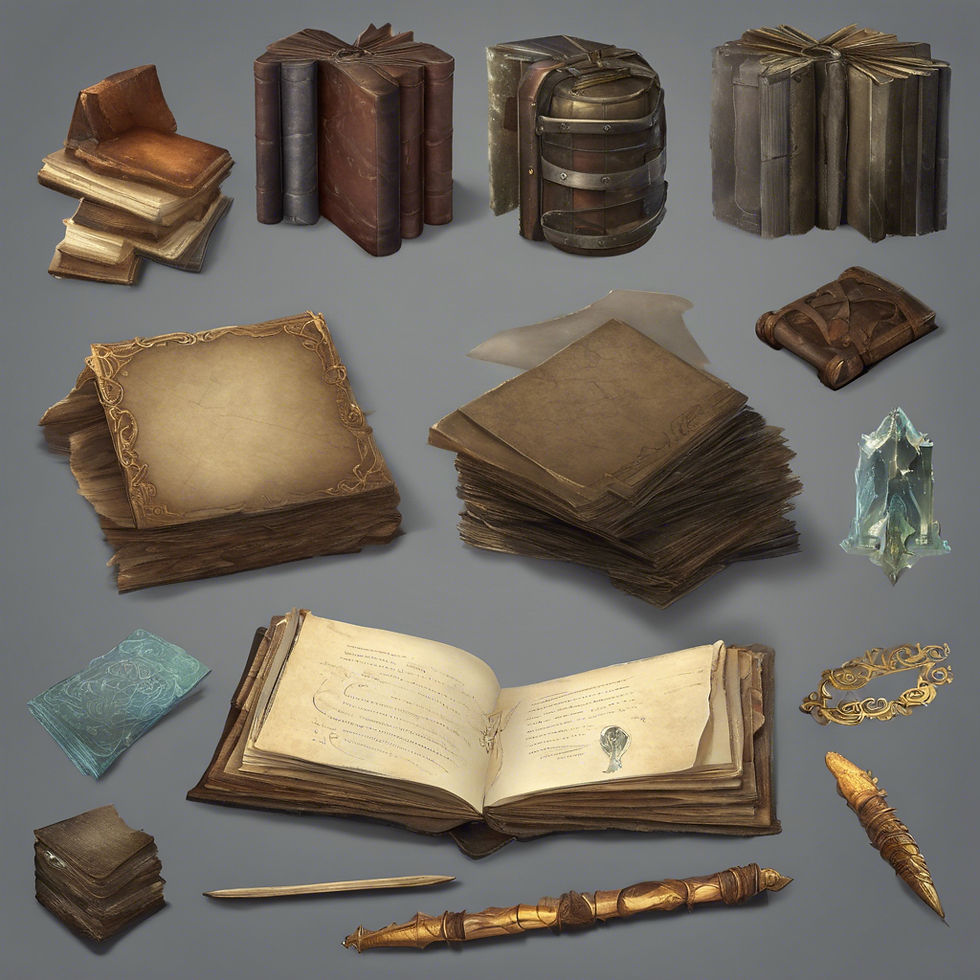The Ultimate Guide to Flip Book Materials: What Are They Made Of?
- FLIP BOOK STAR
- Aug 23, 2024
- 4 min read
What Materials Are Commonly Used to Create a Flip Book?
Flip books are timeless tools for animation enthusiasts, artists, and educators alike. These small, hand-held books bring images to life through the rapid flipping of pages. But what materials go into making a flip book? This post will delve into the various components that form a flip book, including the types of paper, binding methods, and covers that make these animated books durable and visually appealing.
1. Types of Paper Used in Flip Books
Paper quality is one of the most critical factors in flip book creation. The paper must be thin enough to flip easily yet sturdy enough to withstand repeated flipping.
Standard Office Paper (20 lb): Often used for simple, low-budget flip books. It’s widely available and inexpensive, but it may not provide the best flipping experience.
Cardstock (65 lb - 100 lb): A popular choice for more professional flip books. Cardstock offers greater durability and a smooth surface for printing or drawing, resulting in a high-quality finish.
Recycled Paper: Eco-friendly option, providing a unique texture. Though it may not be as smooth as other types, it appeals to those looking for a sustainable alternative.
Coated Paper (Glossy/Matt): Offers a premium feel and is ideal for flip books that require vibrant colors and a polished finish. The coating also adds durability and resistance to wear.

2. Binding Methods
The way a flip book is bound is crucial to its functionality. Proper binding ensures that the pages flip smoothly and stay intact over time.
Staple Binding: The most common and cost-effective method, especially for smaller flip books. Staples hold the pages together securely but may wear out with excessive use.
Perfect Binding: Offers a more professional appearance, with the pages glued together at the spine. It’s durable but may not allow for the easiest flipping experience due to the stiffness of the spine.
Spiral Binding: Provides excellent flexibility, allowing the pages to flip effortlessly. However, the spiral can sometimes interfere with the smooth flow of the images.
Saddle Stitch Binding: Involves folding the pages in half and stitching them together with thread or staples. This method is often used for thicker flip books and provides a strong, long-lasting bind.

3. Covers and Finishing Touches
The cover of a flip book not only protects the pages but also adds an aesthetic appeal. The choice of material and design can significantly impact the overall look and feel of the flip book.
Soft Covers: Made from thick paper or thin cardstock, soft covers are flexible and lightweight, making the flip book easy to carry around.
Hard Covers: Provide maximum protection and a premium feel. Hardcovers are often used for professional flip books or those intended for long-term use.
Laminated Covers: Adding a layer of lamination to the cover enhances durability and gives the flip book a polished look. It also protects against spills and stains.
Custom Printed Covers: Allow for personalization and branding. Custom designs can be printed directly onto the cover material, making the flip book unique and visually appealing.
4. Additional Features
Some flip books come with added features that enhance their functionality or aesthetic appeal.
Perforated Pages: Allow for easy tearing, which can be useful for interactive flip books or those designed for educational purposes.
Die-Cut Shapes: Unique shapes cut into the pages can add a creative touch, making the flip book stand out from standard rectangular designs.
Foil Stamping/Embossing: Adds a luxurious touch to the cover or specific pages, making the flip book feel more special and high-end.
FAQs
Q1: What is the best type of paper for a flip book?
A: Cardstock (65 lb - 100 lb) is often the best choice for flip books due to its durability and smooth surface, which makes flipping easy and provides a high-quality finish.
Q2: Can I use recycled paper for my flip book?
A: Yes, recycled paper is a great eco-friendly option. While it may have a different texture compared to traditional paper, it adds a unique character to the flip book.
Q3: How do I choose the right binding method for my flip book?
A: Consider the size and purpose of your flip book. Staple binding is ideal for small, simple books, while spiral or perfect binding may be better for larger, more professional flip books.
Q4: Are there any special features I can add to my flip book?
A: Yes, you can include features like perforated pages for easy tearing, die-cut shapes for creative designs, and foil stamping or embossing for a luxurious touch.
Conclusion
Creating a flip book involves careful consideration of materials, from the type of paper to the binding method and cover design. Each component plays a vital role in the durability, functionality, and visual appeal of the flip book. Whether you’re making a simple flip book for personal enjoyment or a professional-grade book for a client, choosing the right materials will ensure that your flip book is both functional and aesthetically pleasing.
Flip Book Star Official Website 👉 www.flipbookstar.com
Telegram Channel 👉 https://t.me/flipbookstar
Instagram Channel 👉 https://instagram.com/flipbook_star
Facebook Channel 👉 https://www.facebook.com/FLIPBOOKSTAR
Twitter Channel 👉 https://twitter.com/FLIP_BOOK_STAR
LinkedIn Channel 👉 https://www.linkedin.com/company/flip-book-star/
YouTube Channel 👉https://www.youtube.com/@FLIPBOOKSTAR/

Comentários